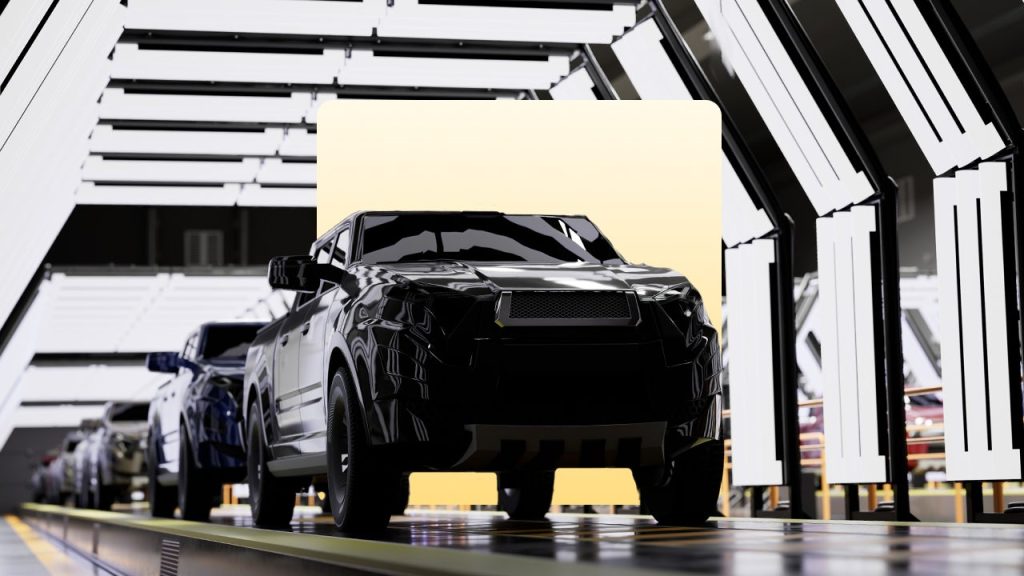Key takeaways
- Automotive companies plan vehicles years in advance, making it difficult and expensive to make changes as quickly as new tariffs require.
- Short-term discounts are available for automakers that use imported parts to assemble vehicles domestically. However, these may not be large enough — and may not last long enough — to provide meaningful relief to the industry.
- The White House’s recent deal with the U.K. reestablishes pre-tariff trade conditions, which will have minimal impact on the automotive industry.
- Vehicle prices will increase as a result of tariffs, but when they increase will be based on each manufacturer’s inventory, the vehicle’s model and manufacturer decisions.
Sean Tucker, Lead Editor of Creative Development at Kelley Blue Book, is skeptical about the Trump administration’s recent tariffs.
“The fundamental problem with a president trying to do something through tariffs is that a presidency is four years. Politics just moves so much faster than the finances of the auto industry do.”
The tariffs Tucker describes were introduced by the Trump administration in March as part of an attempt to bring manufacturing back to the United States. According to Tucker, that may not be the best approach for an industry that often operates on ten-year timelines.
The auto industry plans extensively, adapts slowly
With new car models coming out every year, it might seem like the auto industry evolves rapidly. In reality, the vehicles being designed today may not hit dealerships until 2035. New vehicles go through a number of stages before they hit the market. Research from Car and Driver shows that the process takes an average of 72 months and includes market research, design and engineering, manufacturing and product launch.
Producing a new vehicle requires establishing supply lines, crafting multi-billion-dollar contracts, retooling factories and retraining workers. Once enacted, these plans are difficult and expensive to change.
“Take Ford. Ford already has the Ford F-150. They’re already contracted for where to produce that thing through 2028, at which point they’ll introduce a new one and start the 2029 contracts,” Tucker explains. “Not much you’re going to do in the next four years can change that.”
Automakers such as Ford and Kia, which already have assembly plants in the U.S., are better positioned to weather tariffs. However, they will still face high tariffs on imported parts unless they can source new, cheaper parts. For now, they’re swallowing the cost by offering consumers employee pricing and generous cash-back deals.
Some car manufacturers are amping up domestic production, but it will take time. General Motors just announced an $888-million investment in an assembly plant outside Buffalo, New York, which will be retooled to create next-generation V8 engines. This will be a two-year process, and the future of supply chains to build these factories may be disrupted as tariffs affect every part of the construction and manufacturing industries.
Automakers don’t make decisions on one- or two-year time frames when they’re designing a new car or when they’re entering into contracts for production of a new car. They’re looking seven to ten years out.
— Sean Tucker, Kelley Blue Book editor
When will consumers see auto prices increase?
While most industry experts agree that auto prices will increase because of tariffs, no one is quite sure when consumers will see those increases on lots. Price changes will vary by manufacturer, inventory and model. Manufacturers like Toyota, for example, that operate with less stock in the country will have to import new vehicles sooner. This means the price of a Toyota is more likely to increase before the prices of cars manufactured by companies like RAM, which has a larger supply of domestic stock.
I’ve seen a lot of predictors out on the web that are saying each individual model’s jumping by 25%, and we just, we’re not seeing that, and we don’t expect to ever see that.
— Sean Tucker, Kelley Blue Book editor
While tariffs are applied at a flat rate, Tucker believes that the increases won’t be as simple as a 25 percent tariff equating to a 25 percent price increase on every vehicle.
“Automakers can play certain games to protect certain buyers,” he explains. For instance, the least expensive model Chevrolet sells is called the Trax. It has a starting MSRP of $20,400 and is imported from South Korea, so it’s subject to tariffs. “If Chevy increases the price on that thing by 25 percent, nobody’s going to buy it.”
What Chevrolet can do is increase the price of the Silverado, for example, by a slim margin to help offset the cost of the Trax. By spreading out the increased cost, auto manufacturers can help soften the impact for consumers. It may not be significant — even with auto loan rates staying largely stable since the beginning of the year, the price increase could make it more difficult to qualify for a loan.
Discounts for domestic manufacturing offer little relief
In April, the White House announced a discount for auto manufacturers that use imported parts but assemble vehicles domestically. This discount comes in the form of a rebate, and manufacturers must apply for it by submitting a request to the Commerce Department detailing the number of vehicles and plants that will use the parts.
Keep in mind:
While auto manufacturers are happy to have any relief, Tucker says this rebate won’t make much of a difference.
“It’s a fairly small refund, around three and a quarter percent in the first year and two and a half in the second year, and then it disappears.” In addition to being small, the rebate doesn’t address the real issue of time. “[Automakers] are looking seven to ten years out, so if you give them a one-year exception, it doesn’t change much for them because they’re already, right now, planning the 2030 and 2032 models.”
In three years, when this rebate option ends, automakers may still be building and retooling factories as they gradually move production stateside. They’ll also still be fulfilling contracts that were settled before the second Trump administration began.
Trump’s recent UK deal changes very little
The White House struck a deal with the U.K. in May to reduce import taxes on up to 100,000 British vehicles per year, bringing them from 27.5 percent to 10 percent. The deal also removes a 25 percent tariff on a quota of British steel and aluminum. Details of the deal are still not finalized as of this writing, including setting a clear import quota for steel and aluminum and clarifying whether steel derivative products will be included in that quota.
This was the first such deal the Trump administration has made since implementing his steep global tariffs. The administration claimed the deal would give the U.S. access to new trade opportunities for agricultural, chemical and mechanical products worth $5 billion, in addition to a less expensive source of steel and aluminum.
When asked about the deal, Tucker says the impact for the auto industry is “going to be pretty minimal. It’s an exception for a hundred thousand cars, which is about how many the United States imports from Britain in a year.” Additionally, the deal primarily applies to luxury or ultra-luxury cars like Bentleys and Jaguars, which are generally too expensive for the average American consumer.
To further bring home how little this trade deal changes things, Tucker recently wrote about a Honda factory in Greensburg, Indiana. This factory alone produces 250,000 cars a year — and is one of the more productive factories globally. A tax reduction on 100,000 imported vehicles may seem large, but it’s ultimately a small drop in the bucket when it comes to vehicles already being produced in the U.S.
As for steel and aluminum, the U.S. imported little of either from the U.K. before tariffs were implemented. According to U.K. Steel, the U.S. only imported 180,000 pounds of British steel in 2024, which accounts for a small fraction of steel imported into the U.S. Data from World Population Review shows that the U.S. imported around 32,300 kilograms of aluminum from the U.K. in 2023 compared to 985 billion kilograms from Canada.
Bottom line
The Trump administration is currently attempting to use tariffs to bring manufacturing back to the U.S., but the short timeline it has set conflicts with the long-term planning of the automotive industry. Recent discounts the Trump administration introduced are unlikely to make much difference to automakers, and neither will its new trade agreement with the U.K. The short-term result is higher vehicle prices for consumers.
If you’re waiting out the market, there are steps you can take to prepare for your next car purchase. With lenders limiting access to credit for new and used cars, now could be a good time to refinance your auto loan. You may also want to look into getting preapproved for a car loan so you can be sure how much your budget can handle regardless of the impact of tariffs.
Why we ask for feedback
Your feedback helps us improve our content and services. It takes less than a minute to
complete.
Your responses are anonymous and will only be used for improving our website.
Help us improve our content
Read the full article here









